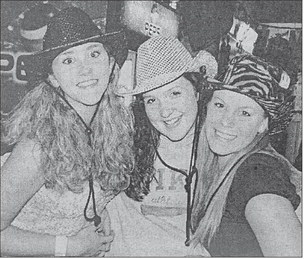A visit to Norway close to home


Be it for the good or the bad, we are from whom we descend. While our ancestors don’t define us, we wouldn’t be here without them.
My descendants and their lives were on my mind recently when my wife Sherry and I visited the Norskedalen Nature and Heritage Center near Coon Valley. The center is a nonprofit organization dedicated to interpreting the Norwegian cultural heritage and natural environment.
The main site sits on nearly 400 acres and includes the Thrune Visitor Center with displays of pioneer and Norwegian artifacts. It also includes the Bekkum Homestead, a twostory house and a series of outbuildings that creates a typical Norwegian immigrant farm at the turn of the 20th century. The buildings are arranged in the traditional Norwegian shape called a ‘tun’ and filled with artifacts donated by local families.
While Hardie is a Scottish name and I am overly-proud of my Scottish ancestry and roots, according to a DNA ancestry test I am only 2% Scottish. Germanic Europe is where 46% of my DNA comes from, followed by Norway at 35%. To fill in the picture, it is 7% Sweden, 5% England and Northwestern Europe, 3% Central and Eastern Europe and 1% Baltics and 1% Ireland. So like a lot of folks, I am a mutt.
The Germanic and Eastern European roots come heavily from my mother’s side of the family, but there was some German blood on my father’s side as well. The two main Norwegian lines run through my paternal grandfather Keith Hardie to some extent (those Scottish Hardie sons married Germans and Norwegians) and my paternal grandmother Cecile Steine, who was Norwegian on both sides of her family dating back centuries.
I have not delved as far back on the Norwegian side as I have on the Scottish and English – particularly after I discovered I have royal blood from Great Britain. But I have gotten as far back as the late 1400s.
I do have one famous Norwegian ancestor. Guri Endreson – my fourth-great-grandmother – is known as the “Heroine of Kandiyohi County” for her actions on Aug. 21, 1862 and the days following when she helped save the lives of some fellow settlers on the Minnesota frontier after an attack from Dakota warriors. Her husband and son were killed. In 2012, I visited Guri’s cabin, which is a Minnesota State Historical site and also on the National Register of Historic Places. I wrote a story about my ancestor and her harrowing experiences. When Guri came to America in 1857, she left behind her oldest daughter, Helga Rosseland, my third-greatgrandmother.
The family homesteaded on Solomon Lake in Kandiyohi County near Willmar, building a one-room cabin with a loft in 1858. There were about 600 people living in the county at the time, most of them of Scandinavian descent.
I’ve heard stories from my late great-aunt Sara Clair since I was a boy about a descendant who had survived an Indian attack in Minnesota. Sara’s grandfather, Edmund Rosseland (Guri’s grandson), came to America from Norway in 1881 and helped build the house where I now live.
The Norwegian invasion of Vernon County started in the late 1840s – about 10 years after the first Norwegians came to Wisconsin. According to the book “Norwegians in Wisconsin” by Richard Fapso, they were lured by the steep hills and fertile valleys. Letters sent home – Norwegian social media at the time – brought even more settlers.
Norwegian settlers in my neck of the woods in Jackson County started coming from Norway in 1852, Fapso wrote, stopping briefly in Coon Valley before settling into the Trempealeau Valley area.
I certainly appreciate my Norwegian heritage – especially some of the holiday baking. My grandmother and great-aunt were expert lefse makers and Sherry has made many of the traditional Norwegian cookies and treats. Lutefisk … I could do without.
In 1982 I was able to travel in Norway to visit relatives and one of the ancestral farms that is still in the family.
I enjoyed the displays at Norksedalen, which brought back some memories. I also chuckled at the display of the psalmodicon, a single-stringed instrument that was the alternative to the fiddle for sacred music.
Many Norwegian congregations could not afford organs and violins or fiddles were considered dance instruments and not appropriate for the sacred setting. So the psalmodicon was used because it was inexpensive to build and required little musical training.
Plain, simple and effective. It’s the Norwegian way. I played a quick rendition of “Skip to My Lou.”
By the way, there is one surefire way to spot a Norwegian extrovert.
He’s the one looking at your shoes.

